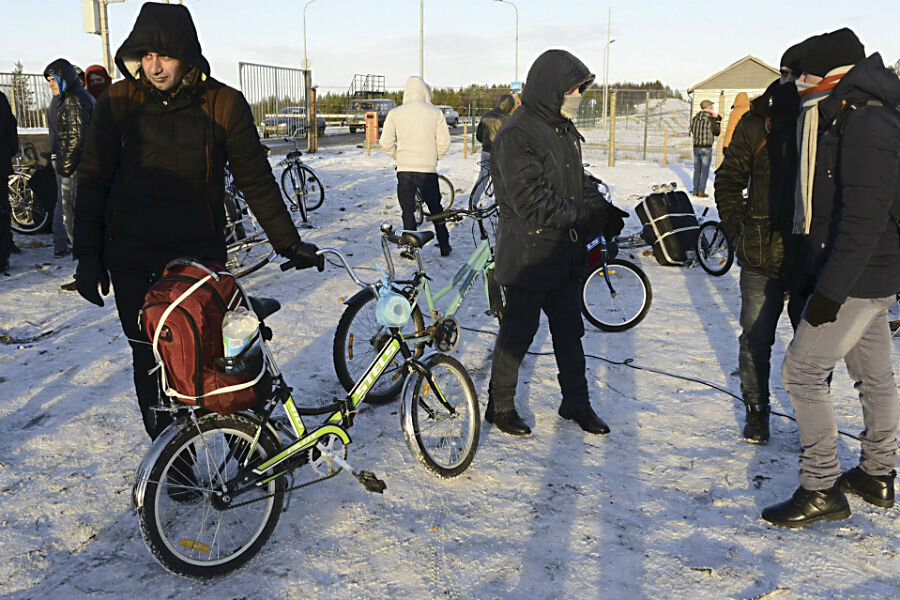Why Syrians are paying top dollar for children's bikes in Russia
Loading...
Even as winter bears down, and the polar night descends, the Arctic frontier Norway shares with Russia is becoming an increasingly popular route for asylum seekers making the journey to Western Europe.
Polar night– when the sun does not rise from roughly late November to late January – is just one deterrent making the route difficult for the increasing number of Syrians, Afghans, and others opting for this remote and snowy path in search of stability.
"In Norway, the government gives you a chance. Maybe here I can have a future," Bikram Shrestha, a 32-year-old Nepalese car mechanic who lived for five months in Moscow, told Reuters. "In Russia, they don't speak English and it is hard to get a job."
He cycled about 30 kilometers (18.6 miles) to the border on a children's bicycle he bought for $400.
An odd coincidence of Russian and Norwegian policies has made bicycles the necessary mode of transport across a stretch of tundra at the Storskog border into Norway.
Russia does not allow pedestrians to cross, and Norway fines drivers who pick up refugees. The loophole in this is that men, women, and children can pass through the border on bikes.
Those bikes - commonly with their packaging still intact - are piled on the Norwegian side of the border crossing, CNN reports. Purchased for about $200 or more on the Russian side, Norwegians carry them off to a dump to be recycled. The bikes, a relatively cheap lifeline, do not usually meet Norwegian regulations that enforces front and back brakes and a serial number on the frame.
Norway's government, made up of center-right Conservatives and the anti-immigration Progress Party, made clear on Tuesday it was moving quickly on emergency legislation to stem the tide of refugees cycling across its border. The proposed policy would allow authorities to deny within 48 hours any asylum seekers who have held residency visas in Russia.
It is spreading news of the regulations on social media, trying to discourage cycling newcomers.
Still, more than 4,000 people have crossed the border since August, a dramatic rise from the 10 who arrived in 2014, according to Norwegian authorities. The number of asylum-seekers going by way of the Arctic is dwarfed however by the three-quarters of a million who have arrived via Europe's southern shores in Greece and Italy after making the dangerous Mediterranean crossing this year, a trek that has killed 3,400.
The boats are harrowing, and the bikes and ice have provided yet another difficult passage.
"I fell on the ice maybe 10-12 times," said 32-year-old Waqas Waheed from Pakistan, a textile factory worker who lived for eight months in Moscow and paid $200 for a child's bike.
Rune Rafaelsen, the mayor of the local Norwegian municipality of Soer-Varanger is concerned not about the bikes, but about impending winter. "People could die: it is very cold ... There is a danger it can happen," he said.
Material from Reuters was used in this story.






